International Mail revenue
International Mail is a $1.41 billion business within the Postal Service.
International Mail revenue
International Mail is a $1.41 billion business within the Postal Service.
BULLETIN
On time. Every time. The Postal Bulletin, a nationally distributed biweekly publication, serves as a source for official policy, procedure updates and departmental news for all Postal Service functions. It has never missed a deadline since its inception in 1880.
Go to about.usps.com/resources/postal-bulletin.htm to browse past issues.
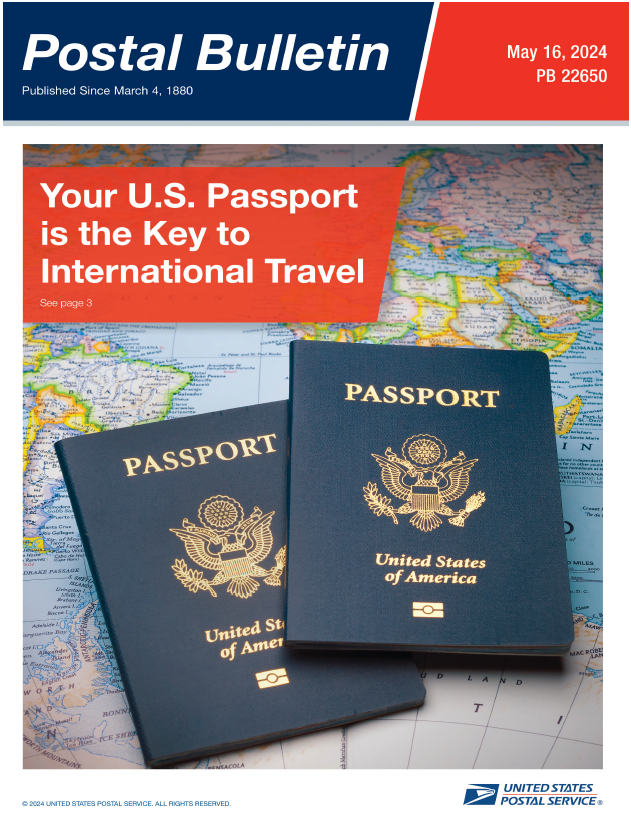
diversity
The strength of the Postal Service lies in its amazing diversity. Our workforce is representative of the diverse communities that we serve.
The Postal Service is one of the most diverse organizations in the nation.
bargain
The price of a First-Class postage stamp is a global bargain.
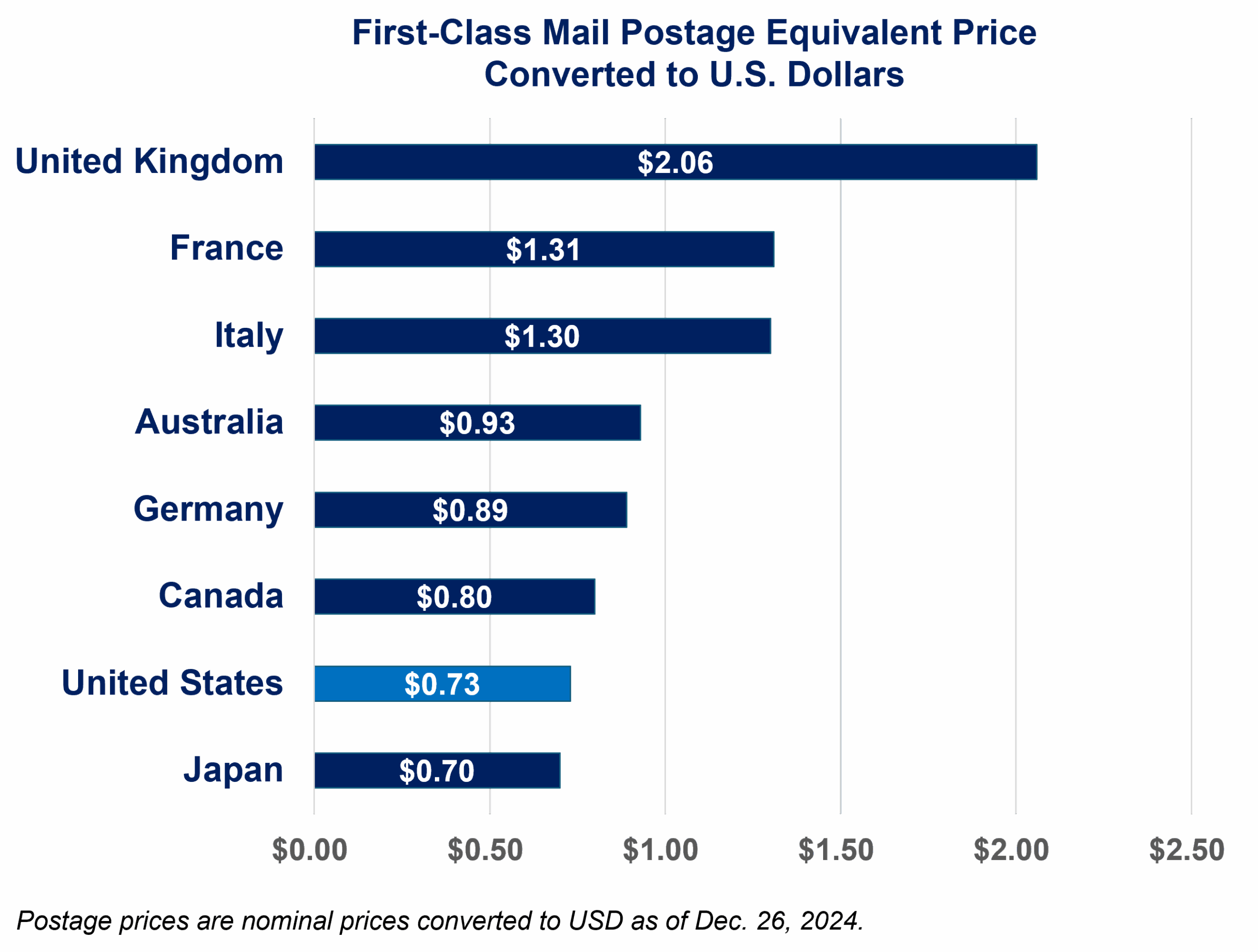
first postage stamps
The first U.S. postage stamps were issued in 1847.
The Post Office Department issued its first postage stamps on July 1, 1847. Previously, letters were taken to a Post Office, where the postmaster would note the postage in the upper right corner. The postage rate was based on the number of sheets in the letter and the distance it would travel. Postage could be paid in advance by the writer, collected from the addressee on delivery, or paid partially in advance and partially upon delivery.
On March 3, 1847, Congress authorized United States postage stamps. The first general issue postage stamps went on sale in New York City, July 1, 1847. One, priced at 5 cents, depicted Benjamin Franklin. The other, a 10-cent stamp, pictured George Washington. Clerks used scissors to cut the stamps from pregummed, nonperforated sheets. Only Franklin and Washington appeared on stamps until 1856, when a 5-cent stamp honoring Thomas Jefferson was issued. A 2-cent Andrew Jackson stamp was added in 1863. George Washington has appeared on more U.S. postage stamps than any other person.
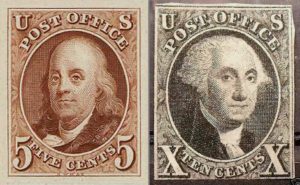
ZIP
Mr. ZIP, who has no first name, appeared in many public service announcements and advertisements urging customers to use their five-digit ZIP Code introduced on July 1, 1963. Within four years of his appearance, eight out of 10 Americans knew who Mr. ZIP was and what he stood for. The character has found new life in recent years a USPS-licensed character and even has YouTube series.
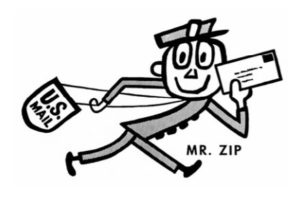
With the introduction of the nine-digit ZIP Code, or ZIP+4, in 1983, Mr. ZIP went into partial retirement. His image still was printed on the selvage of some sheets of stamps, but that practice ended in January 1986. Today, Mr. ZIP is a USPS-licensed character used to expand the Postal Service brand and introduce the organization to new generations of Americans.
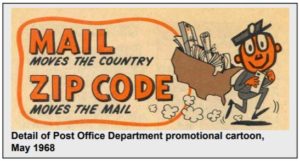
free city delivery
Before 1863, postage paid only for the delivery of mail from Post Office to Post Office. Citizens picked up their mail, although in some cities they could pay an extra two-cent fee for letter delivery or use private delivery firms. An Act of Congress of March 3, 1863, effective July 1, 1863, provided that free city delivery be established at Post Offices where income from local postage was more than sufficient to pay all expenses of the service.
In the late 19th century, free home delivery of mail was introduced — first in cities, then in rural areas — and letter carriers became familiar, trusted visitors to homes and businesses across the country.
Before 1863, postage paid only for the delivery of mail from Post Office to Post Office. Citizens picked up their mail, although in some cities they could pay an extra one- or two-cent fee for letter delivery or use private delivery firms. Among the postal reforms suggested by Postmaster General Montgomery Blair in his 1862 report to the President was free delivery of mail by salaried letter carriers, which he felt would “greatly accelerate deliveries, and promote the public convenience.” He reasoned that if the system of mailing and receiving letters was more convenient, people would use it more often, and pointed to increasing postal revenues in England, which already had adopted free city delivery.
Congress agreed. An Act of Congress of March 3, 1863, effective July 1, 1863, provided that free city delivery be established at Post Offices where income from local postage was more than sufficient to pay all expenses of the service. For the first time, Americans had to put street addresses on their letters.
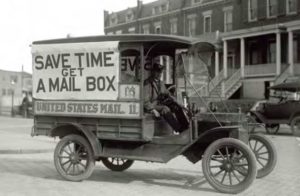
LINK
Link, a daily news site for Postal Service employees, is available on any computer with internet access. The content is produced by a team of writers and editors based at USPS Headquarters in Washington, DC. Additional contributions come from postal employees across the nation. The site is updated with new articles, photos, graphics and videos each weekday.
Regular columns include “Off the Clock,” a column about employees and their after-hours pursuits, and “Milestones,” a regular roundup of employee appointments, awards and retirements.
Employees with USPS email addresses receive a Link email each weekday with the most recent stories. Employees without a Postal Service email address can sign up for the Link Weekly Highlights email at usps.link to have the week’s top stories delivered to their personal email inbox.
in the Postal Service
Each day the Postal Service picks up, processes and delivers millions of letters and packages. No single operation in the world comes close to this level of connectivity for so many households and businesses.
postal employees
Heads of industry. Hollywood legends. Sports heroes. Singers. Painters. Writers. And a couple presidents. All were postal employees before they became household names! Sixteen have even had their image or work featured on stamps.
See the list at about.usps.com/who/profile/history/personnel.htm.
generation vehicles
In December 2022, USPS announced plans to acquire 106,000 new vehicles, including at least 66,000 battery electric delivery vehicles. This includes 21,000 commercial off-the-shelf battery electric vehicles and 45,000 battery electric Next Generation Delivery Vehicles (NGDV). The NGDVs provide better visibility, ergonomic seating, air conditioning, safety improvements and user-friendly operations.

at Post Offices
Post Offices were first required to display the American flag in 1885 to comply with Treasury Department instructions. As of Nov. 7, 2019, Post Offices are required to fly the Prisoner of War (POW)-Missing in Action (MIA) flag on the same days that the American flag is flown.
In 2024, the Postal Service replaced 28,414 U.S. flags and 34,593 POW-MIA flags.
of our domains
The Postal Service owns 1,958 internet domains.
our mark
The Postal Service has 414 domestic and 982 foreign trademark registrations.
the best
Patently the best. The United States Patent and Trademark Office has issued more than 700 patents to the Postal Service.

service
We’re universal. Everyone living in the United States and its territories (Puerto Rico, U.S. Virgin Islands, Guam, American Samoa and the Northern Mariana Islands) has access to postal products and services and pays the same for a First-Class Mail postage stamp regardless of the sender’s location.
focused
We’re customer-focused. The Postal Service is committed to providing a positive customer experience.
With nearly 34,000 retail locations, more than 12 million daily visits on usps.com and serving 155.9 million residences and 12.6 million businesses typically six days a week, the Postal Service is committed to providing a positive customer experience.
and adaptable
The Postal Service has a long and storied history of creating new technologies for the American people, enabling faster, more efficient communication and safer, more secure delivery of correspondence and merchandise. For 250 years, it has adapted to meet the evolving needs of its customers.
driven
The Postal Service uses data not only to ensure its operations run smoothly, but also to help businesses make better use of the mail. Its mission is to provide the right information to the right people in real time using advanced technology.
social network
The Postal Service is the original social network, but that doesn't mean we aren't represented on the other, newer social networks. You can find the Postal Service on Facebook, Instagram, LinkedIn, Pinterest, Threads, X and YouTube. We also have a blog and a podcast.
veterans
We're patriotic. The Postal Service employs nearly 70,000 military veterans, making it one of the largest employers of veterans in the country.
The Postal Service has also issued more than 140 stamps honoring the nation’s military history, including the Armed Forces stamps commemorating the 250th anniversaries of the
U.S. Army, Navy and Marine Corps.
owned properties
The Postal Service owns 8,515 properties around the country.
leased properties
The Postal Service has 22,798 leased properties.
in a shipping container
The Power, MT (59468) Post Office, built in 2019, is the first Post Office built using a shipping container.
ALERT program
As one of the few points of human contact for some homebound customers, letter carriers are particularly attuned to signs that could indicate an accident or illness. If carriers notice something unusual, such as uncollected mail at an at-risk customer’s home, the employee will alert emergency personnel. Carrier Alert began in 1982.
Awareness
USPS National Dog Bite Awareness Campaign. Thousands of carriers deliver to homes with dogs every day. The Postal Service promotes safety initiatives and shares prevention tips to protect employees and customers from dog bites.
National Dog Bite Prevention Week addresses aggressive dog behaviors that pose serious threats to Postal Service employees delivering mail and how communities they serve can play a part in their safety.
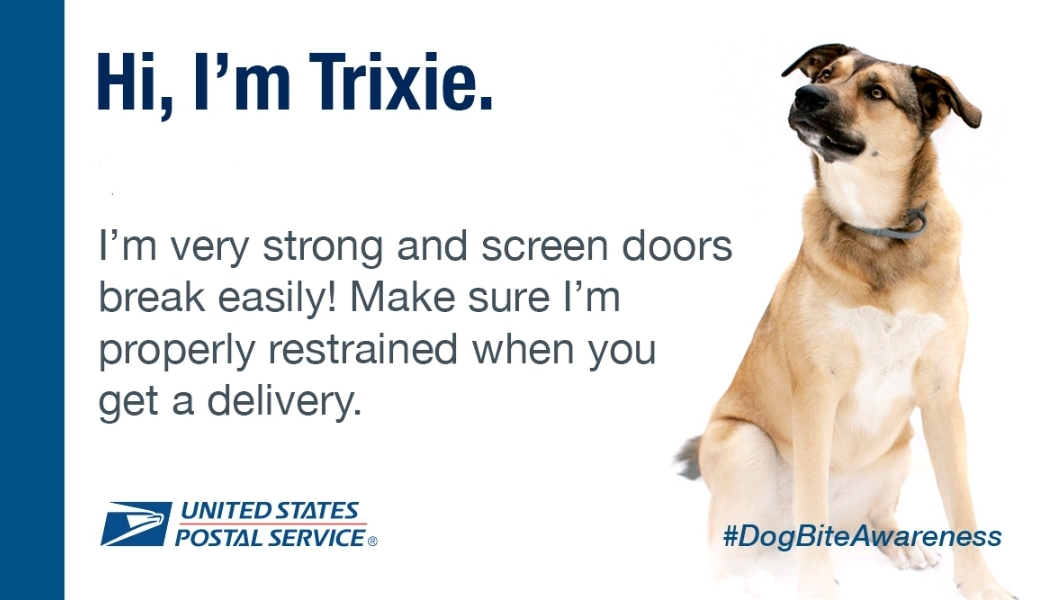
Hunger food drive
Every year, the Postal Service and the National Association of Letter Carriers hold the largest one-day food drive in the nation. The program has collected more than 1.9 billion pounds of food since the campaign began in 1993.
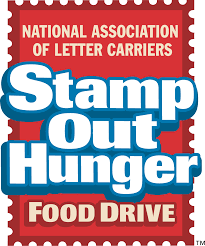
postmasters
Women served as postmasters in this country more than a century before they won the right to vote.
An American History
The United States Postal Service has a storied history, familiar to many. Our history is the history of America. Detailed information about the Postal Service and its history can be found in "The United States Postal Service: An American History" at https://about.usps.com/who/profile/history/.
miles driven in 2024
To move mail using surface transportation, the Postal Service drove more than 1.9 billion miles in 2024 — more than 22.6 million trips.
pounds of mail fly each day
The Postal Service used 150 domestic airports to fly 3.7 million pounds of mail each day in 2024.
Postal Union
The Postal Service is a member of the Universal Postal Union (UPU), a United Nations' organization.
The Postal Service is a member of the Universal Postal Union (UPU), a United Nations’ organization.
Post Corporation
The Postal Service is one of 26 members of the International Post Corporation (IPC). The IPC is a cooperative association of posts in North America, Europe and Asia Pacific.
The Postal Service is one of 26 members of the International Post Corporation (IPC). The IPC is a cooperative association of posts in North America, Europe and Asia Pacific.
Post Group
The Postal Service is one of 10 members of the Kahala Post Group (KPG).
The Postal Service is one of 11 members of the Kahala Posts Group (KPG).
Service Cooperative
The Postal Service is a member of the Express Mail Service (EMS) Cooperative. The EMS Cooperative was created by the UPU in 1999 and consists of 176 postal operators. It allows access to more than 180-member countries to provide EMS — the UPU’s fastest cross-border international postal product.
The Postal Service is a member of the Express Mail Service (EMS) Cooperative.
Group
The Postal Service is one of 36 members of the .POST Group. The UPU’s .POST Group, created in 2013, is a trusted internet domain, established exclusively for the global postal sector and sponsored by the UPU.
The mission of the .POST Group is to support posts in providing their customers with reliable and secure web services.
bicycle delivery routes
The Postal Service delivers mail by bicycle on 50 routes in Arizona and Florida, reducing emissions and saving fuel.
BROKER
The Lable Broker service solves the ever-increasing problem of online customers not being able to print shipping labels.
With Label Broker, customers can get a shipping label on their mobile device, in the form of a matrix barcode, directly from the merchant. The customer uses the code to print an outbound or return shipping label at a Post Office or on a printer connected to usps.com. Label Broker is also the foundational technology that has enabled the USPS Operation Santa program to expand and evolve in a digital format.
For more information, go to usps.com/business/label-broker.htm.

first postmaster general
Benjamin Franklin was appointed the first postmaster general by the Continental Congress in 1775.
launched usps.com
The Postal Service launched usps.com in 1994.
in caves
No troglodytes here! The Stamp Fulfillment Services facility, located in Kansas City, MO, is housed in a limestone cave 150 feet beneath the ground. It is the Postal Service’s only facility located underground.
The consistent, year-round temperatures and humidity levels in the cave allow the stamps to be maintained in mint-quality condition. The underground facility also keeps the inventory and employees safe from snow, flooding, winds and tornadic activity common in the Midwest.
Ahoy!
The JW Westcott is a 45-foot contract mail boat out of Detroit that delivers mail to passing ships on the Detroit River. The JW Westcott has its own ZIP Code — 48222.

This is the J.W. Westcott II approaching a Canadian freighter on the Detroit River
Headquarters
The U.S. Postal Service Headquarters building is located in Washington, DC, just a few blocks south of the National Mall.
Postal Service Headquarters, 1973 — Present
Vlastimil Koubek designed the present Postal Service Headquarters building, which is located in Washington, DC, just a few blocks south of the National Mall.
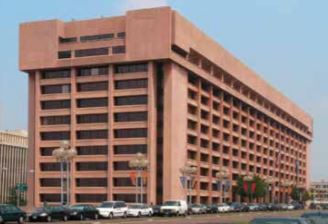
Post Office Department Headquarters, 1899–1934
This granite building on Pennsylvania Avenue, not far from the White House, was the last to simultaneously house both USPS Headquarters and the Washington, DC, Post Office. Horse-drawn wagons brought mail to the building in its early years. By the time the headquarters moved to a larger building, almost all mail was carried by motor vehicles.
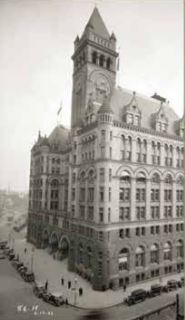
center
Located in Maryland, the William F. Bolger Center is a premier leadership development and conference center servicing both Postal Service and external clients. It is the only hotel in the country featuring an on-site Smithsonian Institution exhibit.
The William F. Bolger Center is a Postal Service-owned, state-of-the-art training facility located on 83 beautiful acres in Potomac, MD. It was built in the 1930’s as a Catholic convent by the Sisters of Mercy.
In the 1980’s, it was purchased by the U.S. Postal Service as a training center.
Named for William F. Bolger (March 13, 1923 – August 21, 1989), the 65th Postmaster General of the United States from March 15, 1978 to January 1, 1985.

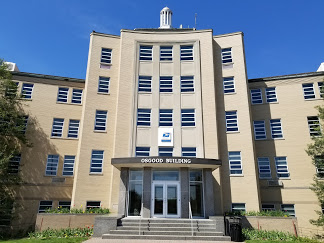
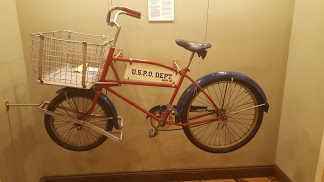



delivery unit sorter
The Automated Delivery Unit Sorter sorts packages and bundles of mail at a rate of 3,400 pieces per hour with a sort accuracy of 99.95 percent.
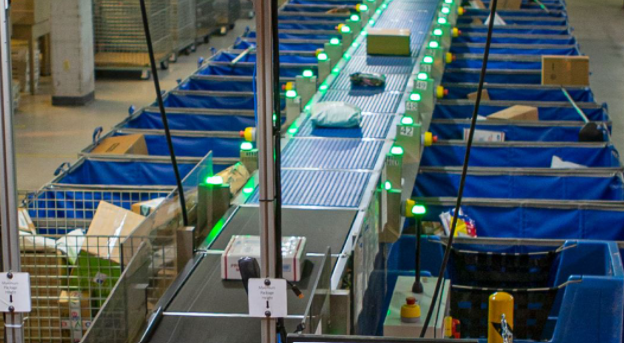
mailpieces processed daily
The Postal Service processed and delivered an average of 371.3 million mailpieces daily in 2024.
371.3 million — average number of mailpieces processed and delivered each day
15.5 million — average number of mailpieces processed each hour
257,813 — average number of mailpieces processed each minute
4,297 — average number of mailpieces processed each second
unstaffed Post Office
One of a kind. There is a 24-hour, unstaffed, self-service Post Office in Vienna, VA, that allows customers to conduct most shipping and mailing transactions quickly and easily themselves. The self-service Post Office provides round-the-clock accessibility to P.O. Boxes, as well as self-service kiosks and an automated package drop.
CREATIVE
© is for creative. The Postal Service has more than 500 copyright registrations, many of them to protect artwork on postage stamps.
service men and women
Honoring service members. The Postal Service proudly partners with the U.S. Department of Veterans Affairs to provide burial flags to families of deceased veterans. In 2024, the Postal Service provided 348,285 burial flags.

of the world's mail
We're global. The Postal Service processes and delivers 44 percent of the world’s mail and is constantly innovating to make customer experiences better.
deliver!
The Postal Service moves mail by planes, hovercraft, trains, trucks, cars, boats, ferries, helicopters, subways, bicycles, mules and feet.
address changes daily
On average, the Postal Service processed 27,201 address changes each day of 2024.
SOCIAL
The Postal Service is the original social network, but that doesn’t mean we aren’t active on the other, newer social networks.
Facebook — facebook.com/usps
Instagram — instagram.com/uspostalservice
LinkedIn — linkedin.com/company/usps
Pinterest — pinterest.com/uspsstamps
Podcast — usps-mailin-it.simplecast.com/
Postal Blog — uspsblog.com
Threads — threads.com/@uspostalservice
X — x.com/usps
YouTube — youtube.com/usps
Tech-Savvy
The Postal Service uses a vast network of people and advanced technologies to collect, process, transport and accurately deliver the nation's mail and packages in an increasingly digital world.
Vehicle Service Operations
Postal Vehicle Service (PVS) operations include more than 12,000 uniformed motor vehicle and tractor-trailer operators. The PVS fleet includes 98 sprinter vans, 2,202 cargo vans, 2,364 tractors and nearly 7,351 trailers. Commuting within a 170-mile radius of their facility, PVS drivers traveled more than 184 million miles last year.
of USPS
The history of the Postal Service is a large story set on a broad canvas. It is intertwined with the history of America, and it provides a lens from which to observe the evolution of the United States. This story is told beautifully in "The United States Postal Service: An American History" (also known as Pub. 100).
You can find the publication at about.usps.com/publications/pub100.pdf.
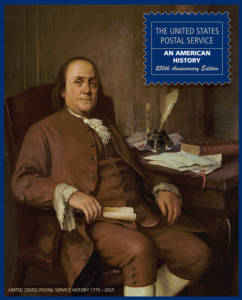
GLOBALLY
The Postal Service works closely with posts around the world to improve service and increase its annual share of the international shipping market.
DIVERSE
The strength of the Postal Service lies in its amazing diversity. Our workforce is representative of the diverse communities that we serve.
socially responsible
The Postal Service supports communities nationwide. These efforts include facilitating the nation’s largest one-day food drive, working with customers to prevent dog bites to mail carriers, educating customers on consumer protection and delivering holiday magic through USPS Operation Santa.
in short-paid revenue
The Automated Package Verification program automates the detection and collection of postage due for mailpieces with insufficient postage using automated package processing equipment. The APV program collected $140.9 million in short-paid revenue in 2024.
Sunday best
Our Sunday best. The Postal Service operates Sunday package delivery to meet the shipping needs of customers.
YOU!
Priority: YOU! The Postal Service priority is and always will be serving you. With free shipping supplies, flat-rate options, $100 worth of free insurance for most shipments, improved tracking and easy online tools, Priority Mail shipping offers one of the best values in the shipping business.
Here’s more you should know:
Priority Mail Express offers you overnight delivery to many U.S. locations with up to $100 of insurance coverage included with most shipments.
With Priority Mail Flat Rate boxes and envelopes, there’s no need to weigh or calculate postage of packages up to 70 pounds.
Priority Mail and Priority Mail Express boxes, envelopes and labels, as well as customs pouches for international mailing products, are available at no charge. They can be ordered at usps.com and delivered to your door or picked up at a local Post Office.
Priority Mail is the environmental choice — boxes are recyclable!
every two weeks
In 2024, the Postal Service paid $2.1 billion every two weeks in salaries and benefits.
of the world's mail
Forty-four percent of the world's mail volume is processed and delivered by the U.S. Postal Service.
passport applications
The Postal Service accepted 7.9 million passport applications in 2024.
if a private sector company
If it were a private sector company, the Postal Service would rank 52nd in the 2024 Fortune 500.
MPS formed
The Military Postal Service was formed in 1980, consolidating the postal operations of the Army, Air Force, Navy and Marine Corps. The Department of Defense designated the Secretary of the Army as the single military mail manager.
Military and Diplomatic Mail in brief.
military veterans
We’re patriotic. The Postal Service employs nearly 70,000 military veterans, making it one of the largest employers of veterans in the country.
The organization has also issued more than 140 stamps honoring the nation’s military history.
Operation Santa
USPS Operation Santa. This program is in its 113th year of operation and relies solely on random acts of kindness and the generosity of strangers. In 2024, millions of people visited uspsoperationsanta.com. Generous customers adopted letters written to Santa and fulfilled wishes, helping families and children experience the magic of the season when they might not have otherwise, one letter to Santa at a time.

For more information, go to USPSOperationSanta.com.
In 2020, the program expanded nationwide for the first time. More than 1 million people visited USPSOperationSanta.com. Generous customers shipped more than 21,000 packages to the families and children who wrote to Santa to help them have a happier holiday.
In 2019, the digital program continued to expand. Letters were accepted letters from 17 locations, and the letters could be adopted by anyone in the country. Gifts could be shipped from more than 19,000 post offices.
In 2018, the Postal Service expanded the 2017 pilot test to include 6 additional cities (Austin, Indianapolis, Philadelphia, Phoenix, San Diego, Washington DC – and Puerto Rico and Chico, CA (site of wildfires). Letters from those locations populated the website and people in those locations only could adopt them and ship from one dedicated post office per city.
In 2017, the Postal Service launched a pilot test of a digital Operation Santa option for residents of New York City. People living in New York City, within proximity of the James A. Farley building could adopt letters online and ship gifts from JAF. Puerto Rico was also added after the hurricanes that year.
HISTORY
In 1912, Postmaster General Frank Hitchcock authorized local postmasters to allow postal employees and citizens to respond to letters addressed to Santa Claus and the program came to be known as Operation Santa.
In the 1940s, mail volume increased to the point where the Post Office Department invited charitable organizations and corporations to participate for philanthropic purposes —providing written responses and small gifts.
Through the years, the program has taken on a life of its own and today cities around the country have established successful programs with recognized charitable organizations, major corporations, local businesses and postal employees making a major difference in the lives of the children from coast to coast.

operating revenue
The Postal Service had $79.5 billion in operating revenue in 2024.
career employees
There were 533,000 career employees in 2024. The number of non-career employees was 106,000.
total mail volume
Total mail volume in 2024 was 112.5 billion.
First-Class Mail volume
In 2024, there were 44.3 billion pieces of First-Class Mail.
First-Class single piece
In 2024, the Postal Service recorded 10.7 billion in First-Class single piece mail volume. First-Class single piece mail is mail bearing postage stamps — bill payments, personal correspondence, cards and letters, etc.
shipping and package volume
In 2024, the Postal Service's shipping and package volume was 7.3 billion.
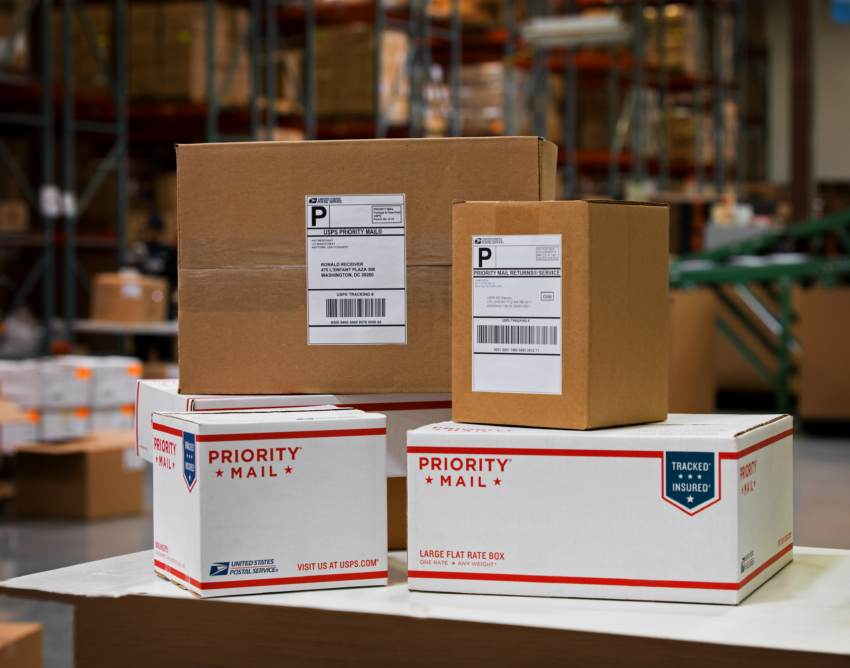
Marketing Mail volume
In 2024, Marketing Mail volume was 57.5 billion pieces.
delivery points
The Postal Service prides itself on going the last mile to deliver the US Mail. In 2024, the Postal Service delivered mail and packages to 168.6 million delivery points nationwide.
total retail offices
The Postal Service had 33,780 retail offices across the United States in 2024. This number includes contract locations. The Postal Service has 31,063 postal-managed retail offices.
Post Offices
There are 31,063 Postal Service-managed retail offices in the United States. Including contract offices, there are 33,780 offices.
customer visits
The Postal Service had 655.2 million customer visits in 2024.
retail revenue
In 2024, Postal Service retail revenue totaled $11.2 billion.
alternate access revenue
In 2024, the Postal Service received $2.1 billion in revenue from alternate access locations. Alternate access refers to locations such as ATMs, grocery stores, convenience stores, etc., where postage and postage-related items can be purchased.
percent
In 2024, 18.1 percent of Postal Service retail revenue came from alternate access locations. Alternate access locations refer to ATMs, grocery and convenience stores, etc., where postage and postage-related items can be purchased.
delivery routes
The Postal Service has 235,461 delivery routes across the United States.
Who's there?
The Postal Service’s only dock-to-dock delivery route is on the Magnolia River in Alabama. A 15-foot contract mail boat delivers to 176 dock-side mailboxes on a 31-mile stretch of the river.
most needing a bridge
The Post Office in most need of a bridge is in Point Roberts, WA. It can be reached by car only by driving through British Columbia, Canada. Only a boat or float plane can travel directly there.
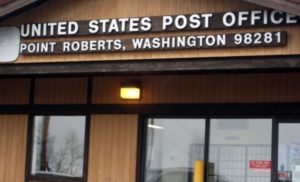
Post Office
The second oldest Post Office location in operations is in Castine, ME, and opened in 1833.
deliver the mail
We have heroes among us. Postal employees regularly go above and beyond to protect the lives of the people they serve, including elderly or disabled customers, through the Carrier Alert Program. In 2024, the Postal Service recognized 109 heroic employees through the Postmaster General Heroes’ Program.
In 2024, the Postal Service recognized 109 employees through the Postmaster General Heroes’ Program.
a retail giant
We’re a retail giant. The Postal Service has the nation’s largest retail network (33,780) — larger than Subway (20,484), Dollar General (20,376), Starbucks (15,270) and McDonald’s (13,598).
postal vehicles
The Postal Service has 257,894 vehicles, one of the largest civilian fleets in the world.
and collaborate
The Postal Service both competes and collaborates with the private sector. UPS and FedEx pay the Postal Service to deliver their ground packages, and the Postal Service pays UPS and FedEx for air transportation.
CENTS
For 78 cents, anyone can send a letter, regardless of geographic location, to anywhere in the United States and its territories. (Stamp price effective July 14, 2025.)
money orders
In 2024, the Postal Service issued 58.5 million money orders, which equates to roughly 160,274 money orders each day.
During 2023, the Postal Service issued 58.5 million money orders.
every two weeks
In 2024, the Postal Service paid $2.1 billion in salaries and benefits every two weeks.
self-funding
The Postal Service generally receives no tax dollars for operating expenses and relies on the sale of postage, products and services to fund its operations.
million in revenue daily
The Postal Service receives, on average, $262.5 million in revenue each day.
handheld scanners
The Postal Service communications network supports and maintains 157,681 workstations, 31,252 server computers, 52,689 printers, 31,092 smartphones, 838 tablets and more than 430,000 handheld scanners.
Trademarks
The Sonic Eagle Logo, the trade dress of USPS packaging, the Letter Carrier Uniform and the Postal Truck and the following marks are among the many trademarks owned by the United States Postal Service: Click-N-Ship®, Deliver The Win®, EDDM®, ePostage®, Every Door Direct Mail®, Express Mail®, First-Class™, First-Class Mail®, First-Class Package International Service®, Forever®, Global Express Guaranteed®, IMb®, Informed Delivery®, Intelligent Mail®, Label Broker™, Parcel Select®, P.O. Box™, Post Office®, Pony Express®, Postal Inspection Service™, PostalOne!®, Postal Police®, #PostalProud®, Priority Mail Express International®, Priority Mail Flat Rate®, Priority Mail International®, Priority: You®, Registered Mail™, Standard Mail®, The Postal Store®, United States Postal Inspection Service®, United States Postal Service®, U.S. Mail®, U.S. Postal Inspector™, U.S. Postal Service®, USPS®, USPS BlueEarth®, USPS Mobile®, USPS Operation Santa®, USPS Tracking®, usps.com®, We are people delivering to people™, ZIP+4® and ZIP Code™. This is not a comprehensive list of all Postal Service trademarks.
Non-Postal Trademarks
Dollar General®, Forest Stewardship Council®, How2Recycle®, McDonald’s®, National Dog Bite Prevention Week®, Starbucks®, Subway®, Sustainable Forestry Initiative®, The Climate Registry®.
Postal Facts 2024 provides the public with information about the U.S. Postal Service. The facts in this publication may be reproduced for the purpose of stating the fact itself, in a business, informational or academic context and the like, and in the body of text discussing factual subject matter relevant to the fact being presented. However, these facts may become outdated after publication and seeking the latest information is advised.
Produced by U.S. Postal Service Corporate Communications
© 2024 United States Postal Service. All rights reserved.
© 2016-2025 United States Postal Service. All rights reserved.
Trademarks
The Sonic Eagle Logo, the trade dress of USPS packaging, the Letter Carrier Uniform and the Postal Truck and the following marks are among the many trademarks owned by the United States Postal Service: Click-N-Ship®, Deliver The Win®, EDDM®, ePostage®, Every Door Direct Mail®, Express Mail®, First-Class™, First-Class Mail®, First-Class Package International Service®, Forever®, Global Express Guaranteed®, IMb®, Informed Delivery®, Intelligent Mail®, Label Broker™, Parcel Select®, P.O. Box™, Post Office®, Pony Express®, Postal Inspection Service™, PostalOne!®, Postal Police®, #PostalProud®, Priority Mail Express International®, Priority Mail Flat Rate®, Priority Mail International®, Priority: You®, Registered Mail™, Standard Mail®, The Postal Store®, United States Postal Inspection Service®, United States Postal Service®, U.S. Mail®, U.S. Postal Inspector™, U.S. Postal Service®, USPS®, USPS BlueEarth®, USPS Mobile®, USPS Operation Santa®, USPS Tracking®, usps.com®, We are people delivering to people™, ZIP+4® and ZIP Code™. This is not a comprehensive list of all Postal Service trademarks.
Non-Postal Trademarks
Dollar General®, Forest Stewardship Council®, How2Recycle®, McDonald’s®, National Dog Bite Prevention Week®, Starbucks®, Subway®, Sustainable Forestry Initiative®, The Climate Registry®.
Postal Facts 2024 provides the public with information about the U.S. Postal Service. The facts in this publication may be reproduced for the purpose of stating the fact itself, in a business, informational or academic context and the like, and in the body of text discussing factual subject matter relevant to the fact being presented. However, these facts may become outdated after publication and seeking the latest information is advised.
Produced by U.S. Postal Service Corporate Communications
© 2024 United States Postal Service. All rights reserved.
© 2016-2025 United States Postal Service. All rights reserved.